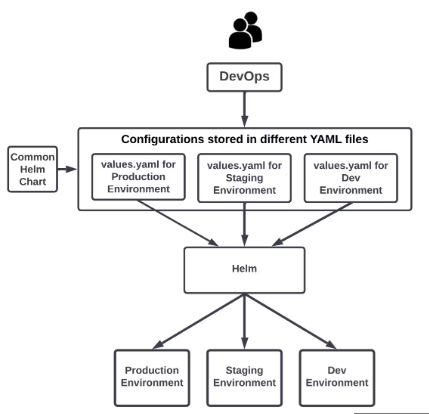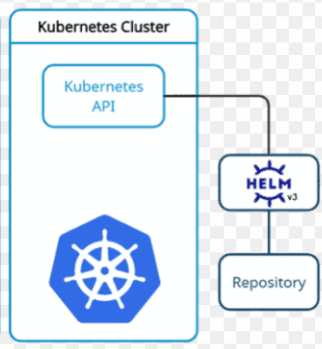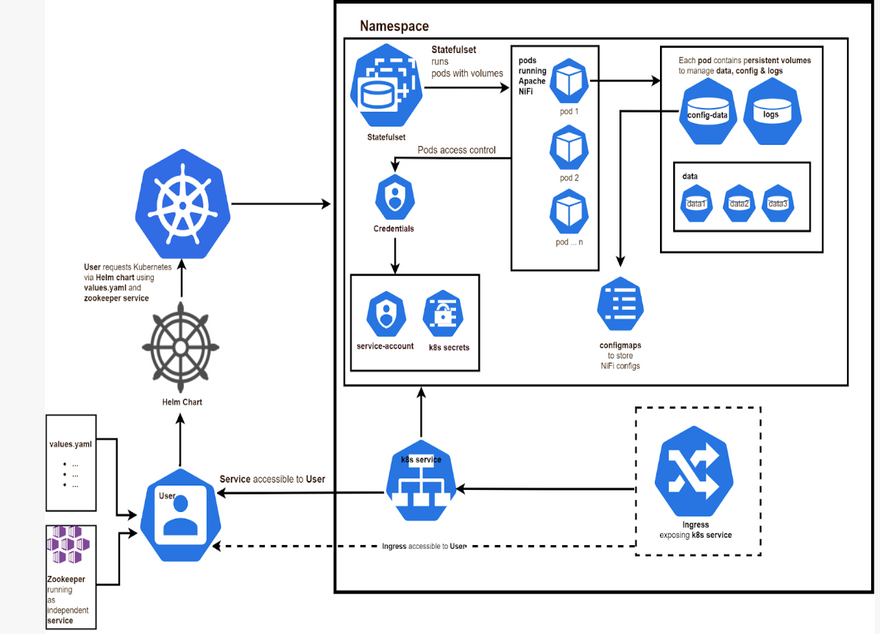Q1 - What is helm?
Helm is a package manager for Kubernetes. It simplifies the deployment and management of applications on Kubernetes clusters. Helm allows you to define, install, and upgrade applications in a consistent and reproducible manner.
Q2 - Top 5 reason for using helm?
1. Simplified Deployment: Helm provides a streamlined and standardized way to deploy applications on Kubernetes. With Helm charts, you can define and package all the required resources and configurations for your application in a single package. This simplifies the deployment process and reduces the chances of manual errors.
2. Reproducible and Consistent Deployments: Helm enables reproducibility by capturing the application's configuration, dependencies, and versioning in a chart. This allows you to consistently deploy the same application across multiple environments, ensuring that the deployed resources match the desired state.
3. Efficient Application Management: Helm simplifies the management of applications throughout their lifecycle. It allows you to easily install, upgrade, rollback, and uninstall releases. You can track the version history, manage dependencies, and make configuration changes without manually editing Kubernetes manifest files.
4. Extensibility and Customization: Helm supports template-based configuration, allowing you to parameterize and customize your deployments. You can define variables, use conditionals, and employ loops within the chart templates to create flexible configurations. This makes it easier to deploy the same application with different configurations for different environments.
5. Rich Ecosystem and Community Support: Helm has a vibrant ecosystem with a wide range of community-maintained charts available in public repositories. These charts cover a variety of popular applications and services, making it easier to deploy them on Kubernetes. Additionally, Helm's popularity means there is ample community support, documentation, and best practices available to assist you in using Helm effectively.
Q3 - How helm works?
Q4 - Helm Architecture?
Q5 - What is chart and what it contains?
A Helm chart is a package of files that describe a Kubernetes application. It contains all the necessary resources and configurations needed to deploy and manage the application on a Kubernetes cluster. Here's what a typical Helm chart contains:
Chart.yaml: This file contains metadata about the chart, such as the name, version, description, maintainers, and dependencies. It provides important information about the chart and serves as a reference for Helm.
Templates: Templates are the core of a Helm chart. They are written in YAML or Go templates and are used to generate Kubernetes manifest files dynamically. Templates allow you to define and customize resources such as deployments, services, config maps, ingress rules, and more.
Values.yaml: This file defines the default configuration values for the chart. It contains a set of key-value pairs that can be overridden during deployment. Values can be used in templates to provide dynamic configuration options, allowing you to customize the behavior of the deployed application.
Charts/: This directory is used to store any dependencies or subcharts required by the main chart. Helm can manage dependencies and automatically fetch them from repositories specified in the chart.
README.md: This file provides documentation and instructions for using the chart. It typically includes information about the application, configuration options, and any additional considerations or dependencies.
LICENSE: This file contains the license information for the chart, specifying the terms and conditions under which it is distributed.
A Helm chart is packaged as a compressed archive (with a .tgz or .tar.gz extension) for easy distribution and installation. By bundling all the necessary resources and configurations into a chart, Helm provides a convenient and repeatable way to deploy and manage Kubernetes applications.




Top comments (0)